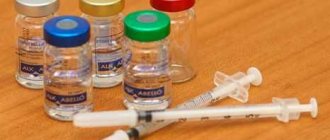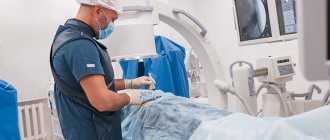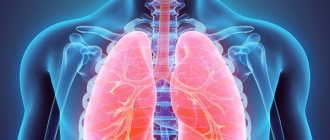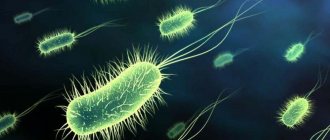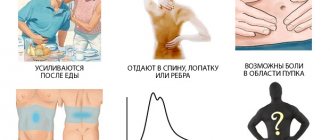Pancreatitis is a serious disease that leads to disruption of the pancreas. To avoid the formation of severe complications that can sometimes lead to the death of the patient, you need to immediately seek help from doctors and begin therapy.
medications for pancreatitis
Today, various medications are used to treat pancreatitis that can make the patient feel better and prevent the development of adverse consequences.
Symptoms of pancreatitis
The pancreas synthesizes digestive enzymes and hormones that regulate protein, fat, and carbohydrate metabolism - insulin, glucagon, somatostatin. The organ has an oblong shape and is located in the upper abdomen, behind the stomach, in close contact with the duodenum. Iron weighs about 70 g, length ranges from 14 to 22 cm, width - from 3 to 9 cm, thickness - 2-3 cm.
Inflammation of the pancreas can occur in acute and chronic forms, the clinical manifestations of which are different. Acute pancreatitis is deadly, since toxins can provoke necrosis of pancreatic tissue and other organs, infection, and purulent processes. Even with timely treatment with modern means, the mortality rate is 15%.
There is no clearly defined clinical picture for acute pancreatitis, so additional examinations are necessary for an accurate diagnosis. In the acute form of the disease, false cysts often form in the pancreas, which cause pain in other organs and disrupt the movement of food through the stomach and intestines. In addition, the pathology manifests itself with the following symptoms:
- acute pain in the upper abdomen, radiating to the left side, back;
- nausea;
- vomiting with bile, which does not bring relief;
- bloating;
- dehydration;
- Jaundice may develop, accompanied by yellowing of the skin, dark urine, and light-colored feces;
- in some cases, bluish spots appear near the navel or on the left side of the abdomen, sometimes with a yellow tint.
With chronic inflammation, irreversible changes occur in the pancreas. It shrinks, the ducts narrow, the cells are replaced by connective tissue, which is why the organ ceases to perform its functions, and the synthesis of digestive enzymes and hormones decreases. Chronic pancreatitis is characterized by a vague clinical picture; its symptoms can easily be confused with other diseases of the digestive system.
The disease develops gradually and does not make itself felt for a long time. The pathology manifests itself as constant or periodic pain in the abdomen, near the left hypochondrium, and can radiate to the lower back. The disease is accompanied by nausea, vomiting, belching, heartburn, and an unpleasant sour taste in the mouth. Diarrhea may alternate with constipation; particles of undigested food are released along with feces. Sudden weight loss and the appearance of vascular spots are possible. Since the pancreas synthesizes insulin, chronic pancreatitis is often accompanied by diabetes mellitus.
Classification
Pancreatitis is classified into 2 main groups: chronic and acute. These are not stages of the same disease. These are two different inflammations of the pancreas. Treatment can be prescribed only after the examination has been completed.
Acute pancreatitis
Acute pancreatitis is a sudden severe inflammation of the pancreas, which can lead to necrosis. This is a very serious disease, and there is still a high mortality rate from this disease throughout the world. The main reason is alcohol consumption. Moreover, it is more often diagnosed not in chronic drinkers, but in people who drink alcohol quite rarely or who did it for the first time. Much less often, pancreatitis occurs as a result of eating poor quality food.
Part of the gland dies immediately, and areas with signs of purulent inflammation form in neighboring tissues. Enzymes that are produced by healthy cells aggravate the process of organ destruction. This disease requires timely medical care.
Chronic pancreatitis
Chronic pancreatitis is a large group of diseases that can be asymptomatic for a long period of time. This disease does not pose a particular threat to human life. But with an exacerbation, the patient’s quality of life may deteriorate. The chronic form can progress due to reasons such as:
- Biliary dependent (caused by disruption of the pancreas);
- While taking medications;
- Alcohol abuse;
- Due to impaired metabolism.
Drug treatment of pancreatitis in adults
If you discover symptoms typical of pancreatic inflammation, you should urgently consult a doctor and undergo testing. Then, based on the results of the tests, the doctor will prescribe a treatment regimen. It provides for actions aimed at:
- relief of pain symptoms;
- relieving inflammation in the pancreas and nearby organs;
- elimination of symptoms accompanying pancreatic enzyme insufficiency;
- prevention of complications.
The sooner you start treatment, the greater the chances of success. All medications for pancreatitis in adults should be taken as directed by a doctor in the prescribed dosage. To treat the pancreas, antispasmodics, antacids, antienzyme drugs, and H-2 blockers are prescribed. Products containing the polypeptide aprotinin help well. In parallel with taking medications, procedures are prescribed to cleanse the body of pancreatic enzymes and a diet.
Features of treatment
Drug treatment of pancreatic disease is based on the use of enzymes in various combinations. It is very important to correctly calculate the dosage and strictly adhere to it. The doctor reviews this type of treatment daily in order to make the necessary adjustments.
The doctor may prescribe medications in the form of granules or capsules.
Treatment with drugs will help the patient get rid of the symptoms that accompany pancreatitis. One of these symptoms is intestinal upset, which usually occurs due to lipid malabsorption.
Antispasmodics for pancreatitis
Antispasmodics are used to eliminate pain during inflammatory processes. They have a relaxing effect on smooth muscles, which facilitates the removal of enzymes through the ducts from the pancreas. Antispasmodics are a temporary measure: as soon as their effect ends, the pain will return, so the main therapy should be aimed at normalizing the functioning of the organ. During an exacerbation, the doctor prescribes intramuscular or intravenous injections, less often - subcutaneous. For chronic inflammation, tablets are used.
To eliminate pain, No-Shpa (Hungary) or its analogue Drotaverine is often prescribed. The active substance of these drugs is drotaverine hydrochloride. The product relieves muscle spasms of the digestive tract, urinary system, biliary tract, gallbladder, and cerebral vessels. The effect of the medicine after oral administration occurs in a quarter of an hour, after the injection - in the second minute. For acute inflammation of the gland, the following is prescribed:
- for intramuscular injections: 2 ml of solution at a time;
- for an intravenous injection, 2 ml of the drug is diluted with 8-10 ml of physiological sodium chloride solution and administered slowly over five minutes;
- tablets: average daily dose – 80 mg, maximum daily dose – 240 mg.
Papaverine, the active substance of which is similar to the name of the drug, effectively eliminates pain. The medicine relaxes the smooth muscles of the digestive, genitourinary and respiratory systems, eliminates spasm of the valve, which is responsible for the outflow of juice from the pancreas. Various manufacturers produce the product in the form of tablets, suppositories, and injections. Medication dosage for adults:
- tablets: 40-60 mg 3-4 times a day, maximum daily dose – 0.6 g;
- subcutaneous and intramuscular injections for pancreatitis: 0.5-2 ml of a two percent solution, maximum single dose - 5 ml, daily dose - 15 ml.
Platiphylline reduces spasms of the abdominal muscles, reduces the tone of the smooth muscles of the bile ducts and gallbladder. Various manufacturers produce antispasmodics in the form of tablets or injections. To relieve acute pain, injections are prescribed: the solution is administered subcutaneously 1-2 ml two to three times a day, the maximum daily dose is 15 ml, a single dose is no more than 5 ml.
Atropine relaxes the smooth muscles of the digestive system and blocks sensitivity to acetylcholine, a neurotransmitter that carries out neuromuscular signal transmission. They are produced in the form of tablets and injections by different manufacturers. To relieve acute pain, 1 ml of 0.1% atropine sulfate solution is injected subcutaneously two to three times a day. The drug has a stimulating effect on the nervous system and heart, so it should be used carefully under the supervision of a doctor.
Groups of medicines
How to treat pancreatitis? During the period of exacerbation of the disease, drugs are used that can quickly relieve pain and stop the development of the inflammatory process. The main types of medicines are:
- painkillers;
- antibiotics;
- antacids;
- enzymes;
- antienzyme drugs;
- non-steroidal anti-inflammatory drugs;
- antisecretory.
During an exacerbation, in addition to medications, patients must take vitamin complexes. They should include vitamins A, B, E, K. They ensure the restoration of impaired digestive processes and normalize the outflow of bile. It is important to remember that pancreatitis is a disease that cannot be completely cured, so medications sometimes have to be taken for years.
This applies primarily to means intended to restore the functionality of the pancreas and normalize the functioning of the digestive tract. Drug therapy must be supplemented with a special diet. Violation of the diet can provoke a re-exacerbation of the pathology.
Enzymes and antienzyme drugs for pancreatitis
To normalize the acidity of gastric juice, the doctor prescribes medications containing substances that replace the digestive enzymes produced by the pancreas. This is amylase, which promotes the processing of starch into sugars, as well as protease and lipase (the first breaks down the compounds between amino acids in proteins, the second - fats). Enzyme preparations for pancreatitis support the functioning of the pancreas, help avoid its depletion, digest food efficiently, and get rid of diarrhea, nausea, bloating, and flatulence.
For the treatment of pancreas, enzyme medications containing pancreatin are prescribed. It breaks down fats, proteins and carbohydrates, replacing amylase, lipase, protease:
- Festal. In addition to pancreatin, the composition contains hemicellulose and bovine bile extract. The medicine promotes not only the digestion and absorption of food, but also the breakdown of fiber, improves bile secretion, and activates lipase. Dose: 1 tablet per day after or during meals.
- Creon. Release form: capsules 150, 300, 400 mg of pancreatin. The dosage depends on the clinical picture of the disease; it is taken during or after a meal.
- Panzinorm 10000 and 20000. Available in capsules, drink 1 tablet with meals three times a day.
- Digestal. Release form: pills. Take 1-2 pcs after or during a meal. three times a day.
- Mezim 10000 and 20000. Available in tablets, capsules, dragees. Take 1-2 pcs before or after a meal. one to three times a day.
If the pancreas is swollen, its activity should be suppressed. To do this, the doctor prescribes intravenous administration of antienzyme drugs. Among them, Kontrikal or its analogue Aprotinin should be highlighted. They inactivate proteinase and have an inhibitory effect on the kallikrein-kinin system, a group of proteins that are actively involved in inflammatory processes, blood clotting, and pain.
For intense pain
When the gland becomes inflamed, the patient experiences severe pain on the left side under the ribs, in the upper abdomen. The discomfort can be so unbearable that it is impossible to stand, sit, talk, or breathe. It happens that the pain syndrome affects the back, between the shoulder blades, and the lower back. These zones indicate which part of the organ is affected.
ibuprofen
To eliminate pain, the following drugs are used for pancreatitis:
- non-steroidal group – Paracetamol, Ibuprofen;
- strong analgesics - Baralgin, Analgin.
To relieve pain when its manifestations are unbearable, narcotic analgesics are prescribed, which are administered intramuscularly:
- Buprenorphine.
- Tramadol.
Painkillers should not be used regularly, even if they do not contain narcotic substances and they do not cause habit.
Painkillers and antispasmodics are used when it is necessary to relieve spasms and facilitate enzymatic elimination:
painkillers for pancreatitis
- Drotaverine.
- Spasmalgon.
- No-shpa.
- Spasmol.
- Riabal.
These medications have the following effects on illness:
- alleviate the patient’s condition by eliminating pain;
- reduce the load on the organ, helping to improve the output of digestive effects.
Medicines that prevent or weaken the effect of acetylcholine and cholinomimetic drugs will help defeat the disease.
Medicines prevent pathological impulses in the nerve ganglia and brain.
The working course of the gastrointestinal tract returns to normal:
- Atropine.
- Chloroquine.
- Spasmolitin.
- Platyfillin.
Antacids
An inflamed pancreas causes the stomach to secrete large amounts of hydrochloric acid. Increased acidity corrodes surrounding tissues, causes severe pain, and neutralizes the work of digestive enzymes. To improve the effect of enzyme preparations and prevent damage to the walls of the stomach, doctors prescribe antacids, the task of which is to neutralize hydrochloric acid. Medicines in this group are characterized by an enveloping effect, protect against harmful influences, improve the synthesis of bicarbonates, and prevent flatulence.
The main active ingredients of antacids, which are used in the treatment of inflamed pancreas, are magnesium and aluminum compounds. Such drugs reduce the level of hydrochloric acid, have a choleretic and local anesthetic effect, have a laxative effect, improve bile secretion, and eliminate gas formation. Medicines in tablet form should be crushed or chewed thoroughly before use. To stabilize the acid-base balance, the following drugs are prescribed:
- Gel Almagel. Adults are prescribed to take 1-2 tsp. a day half an hour before meals and before bedtime. The maximum daily dose is 16 tsp. The course of treatment is 2-3 weeks.
- Maalox suspension and tablets. It has an analgesic effect, relieving pain in the upper gastrointestinal tract. Dosage – 2-3 tablets or 15 ml of suspension an hour after meals and before bedtime. The course of treatment is 2-3 months.
- Gastracid tablets. Dosage: 1-2 tablets 4 times a day after meals and before bed. The course of therapy is no longer than three weeks.
- Alumag tablets. Drink 1.5 hours after meals. The course of treatment is a month.
- Gel and tablets Palmagel. Dosage: 2-3 tablets or 5-10 ml of suspension one and a half hours after meals. The course of therapy is 2-3 months.
Anti-enzyme agents
Sometimes a person must take drugs with an anti-enzyme effect. They help suppress the production of digestive enzymes, since their excessive activity can cause a deterioration in the condition of inflamed pancreas tissue.
By reducing the production of digestive enzymes, the following problems are solved: intoxication of the body is reduced, pain is reduced, the general well-being of the patient improves, and the likelihood of developing edema and necrotization of pancreatic tissue is minimized.
Nutrition for pancreatitis during exacerbation
The group of drugs includes:
- Contrikal;
- Gordoks;
- Trascolan;
- Trasylol;
- Ingitril.
Trascolan and Ingitril are often prescribed for the development of painful shock, as well as for peritonitis. The drugs can cause a strong allergic response and are contraindicated in cases of increased blood clotting.
H2 blockers
When treating pancreatitis, secretion inhibitors - histamine H2 receptor blockers - must be prescribed simultaneously with antacids. These drugs make the receptors of stomach cells that produce hydrochloric acid insensitive to histamine. This reduces its synthesis and entry into the gastric lumen, which helps treat pancreatitis. The effect of blockers on the body is not limited to this: secretion inhibitors make the gastric mucosa more resistant to aggressive factors and promote its healing.
H2 blockers should be taken carefully, in the dosage strictly prescribed by the doctor, since they can cause many side effects. 1st generation medications cause the most complications. The following drugs are prescribed to treat an inflamed pancreas:
- Cimetidine. The drug is taken before or during meals. The maximum concentration in the blood is observed after 2 hours. This is a first-generation drug, so it can cause many side effects from different organs. Among them are diarrhea, flatulence, headaches, damage to the central nervous system, changes in blood composition, and decreased immunity. After a day, 48% of the active substance leaves the body.
- Ranitidine. The drug belongs to the second generation. Its activity is 60 times higher than that of Cimetidine. The medicine is taken regardless of food. The drug gives fewer complications and is characterized by a longer action. It is quickly absorbed into the bloodstream, the maximum concentration is observed after 2 hours. Forty percent of the active substance leaves the body after a day.
- Famotidine tablets. The drug is of the third generation, therefore much more effective than Ranitidine, has fewer side effects and is well tolerated. The product can be taken regardless of meals. The maximum level is observed after an hour, the half-life is 3.5 hours, the effectiveness lasts 12 hours.
Recent studies have shown that H2-histamine receptor blockers have many disadvantages. They are unable to maintain the required level of acidity for more than 18 hours; after treatment, many relapses occur, the body quickly gets used to the medicine and is able to resist it, and addiction occurs to taking the drugs. The biggest disadvantage of blockers is that their use can provoke the development of pancreatitis or its exacerbation.
Prescription of drugs
To begin therapy for the pathology, the doctor, after an appropriate examination, prescribes a drug treatment regimen, which depends on the severity of the disease and the general well-being of the patient. There is no general treatment regimen; the course of treatment is selected individually for each patient.
To begin with, during the acute period of pancreatitis, it is imperative to observe bed rest; therefore, in case of aggravated forms of the acute course, therapy takes place only in a hospital. Failure to comply with this mandatory rule can lead to illness leading to disruption of vital functions.
During the first three days of the acute period, it is recommended to refuse to eat and drink only liquids to prevent dehydration and to quickly remove toxic substances from the body.
To alleviate the patient’s general condition in case of severe pain, medication therapy is prescribed. Complex treatment includes taking several types of medications to get rid of various symptoms of the disease and restore the functionality of the pancreas.
Drugs for the treatment of acute pancreatitis include antibiotics, anti-enzyme agents, painkillers and drugs that relieve spasms. For chronic pancreatitis, the treatment regimen usually includes enzyme preparations, medications to relieve spasms, and anti-inflammatory drugs. In addition, be sure to use drugs that have a choleretic, enveloping effect, and vitamin therapy is carried out. A nutritionist will determine your diet and prescribe a diet that must be followed at home.
The following groups of drugs are taken for the treatment of pathology:
- drugs for spasms and analgesic effects;
- enzyme and anti-enzyme agents;
- antacids;
- sedative drugs;
- H2-blockers of histamine receptors.
When the pathology involves the glands that are responsible for the synthesis of insulin, insulin agents are also included in the course of treatment.
You should definitely follow your doctor’s recommendations; if acute pancreatitis is not treated correctly, it can become chronic.
Proton pump inhibitors
Recently, H2-histamine receptor blockers have begun to replace more effective and safe drugs - proton pump inhibitors (PPIs). Their action is aimed at blocking the work of enzymes known as the “proton pump”, which are directly involved in the synthesis of hydrochloric acid. The advantage of PPIs is that they are not addictive after withdrawal, they are unable to provoke the development of pancreatitis, and cause a small number of adverse reactions.
All proton pump inhibitors are benzimidazole derivatives and therefore have the same mechanism of action. The active substance of the drugs selectively accumulates in the secretory tubules, where, under the influence of high acidity, it is converted and activated, blocking the work of the enzyme. PPIs are able to control the synthesis of hydrochloric acid throughout the day, regardless of what stimulates its release.
The most studied drug in this group is Omeprozole, a single dose of which provides rapid inhibition of hydrochloric acid synthesis. For acute inflammation of the pancreas, the drug is prescribed in a dosage of 20 mg once a day, for recurrent inflammation - 40 mg/day, chronic - 60 mg/day. After consuming Omeprozole, the production of hydrochloric acid is reduced by 50%. The decrease in acidity begins after 2 hours, the maximum effect is observed on the fourth day.
An effective medicine for pancreatitis is Pantoprazole, which is sold under the names Nolpaza, Sanpraz, Ulsepan. Pantap. The drug is effective regardless of food intake, but it is better to take it 10 minutes before a meal. The maximum concentration of the drug in the blood is observed after 2.5 hours, the effect lasts for a day. The duration of the course of treatment is determined by the doctor.
- Twister hair clip
- Thoracic osteochondrosis - symptoms and signs. Manifestations of osteochondrosis of the thoracic spine and treatment
- Cabbage pie in the oven: recipes with photos
For the treatment of pancreatitis, Rabeprazole (analogs - Pariet, Razo, Khairabezol) is used as a complex therapy. PPIs begin to suppress acid production within an hour of taking the medication. The maximum decrease in the level of acidity in the stomach is recorded two to four hours after the first dose, a stable effect after 3 days of treatment. On the first day, the acidity level decreases by 61%, on the eighth day of treatment - by 88% of the original numbers.
The best medicine for the pancreas: reviews
Below you can read reviews from patients who have experienced pancreatic diseases.
The best medicine for the pancreas, reviews:
Oleg. I work in a male team, so often after work we go to celebrate birthdays, anniversaries, and holidays. Naturally, one cannot do without alcohol and fatty foods. We snack on vodka with fatty meat, shish kebab and various cuts of sausage. Unfortunately, we are no longer the same age, so sometimes we have to control ourselves and refuse such celebrations. Recently there was an exacerbation of pancreatitis, so I was in the hospital for 10 days. They gave injections with papaverine and administered drugs that improve the functioning of the pancreas. To normalize liver function, he was prescribed Gepabene; for the pancreas, he took Creon and Pancreatin. Now I’m trying to stick to a diet, not to eat fatty foods, and especially alcohol.
Olga . Due to excess weight and problems with insulin, pain arose in the pancreas area. Perhaps the disease arose much earlier, but made itself felt only now. Twice a year I go to the hospital and have my pancreas and liver treated. For these purposes, I take hepatoprotectors, enzymes and painkillers. Unfortunately, it is impossible to completely cure the pancreas if you do not control your diet and normalize your weight. I recommend that patients suffering from pancreas go on a diet and lose weight. Most likely, the condition will return to normal, and all systems, including the pancreas, will work much better. I do not encourage anyone to adhere to a raw food diet, since it is also harmful for pancreatitis. It is worth consuming less fatty foods and completely avoiding fried foods.
Svetlana . I encountered pancreatitis of the pancreas for the first time, and to be honest, I was shocked. The disease is accompanied by terrible health, vomiting, nausea and constant pain. I was forced to see a doctor; the examination horrified me. I had to swallow a probe to examine my stomach and do an ultrasound. Now I take enzymes and am on a diet. To reduce pain, papaverine and non-steroidal anti-inflammatory drugs were prescribed. The pain has decreased, but in general I plan to reconsider my diet and switch to PN.
Pills
It will be useful to read the following articles on our website:
- The best drink recipes for weight loss
- How to make homemade diet mayonnaise?
- The simplest diet for the lazy
- Diet 6 cereals: menu for the week
- Features of the grapefruit diet
For diseases of the pancreas, not one single drug is prescribed, but complex therapy is used, which is aimed at increasing the outflow of enzymes, as well as relieving spasms.
Other medications for pancreatitis
In some cases, with chronic inflammation of the pancreas, doctors prescribe sedatives that have a calming effect on the nervous system and reduce emotional stress. These drugs not only reduce depression, but also enhance the effect of pain medications for pancreatitis. Among these drugs are:
- Doxepin;
- Amitriptyline;
- Glycine;
- Phenibut.
If the pancreas is inflamed, the doctor may prescribe hormonal therapy. To suppress the production of pancreatic and gastric juice, Octreotide is used, an analogue of the hormone somatostatin, which is used to treat tumors. Corticosteroids (eg, Prednisolone) are prescribed if chronic inflammation is caused by an autoimmune disease. Hormonal therapy for a certain period of time, since long-term treatment can cause many side effects.
In chronic pancreatitis, indigestion accompanied by diarrhea is often observed. Enzyme deficiency slows down the digestion of food, which is why food is retained in the gastrointestinal tract, and bacteria settle in it, causing rotting processes, causing diarrhea and flatulence. Sorbents can cope with this problem. Smecta for pancreatitis neutralizes these processes, eliminating discomfort and stabilizing stool. The drug creates a protective membrane on the mucous membrane, envelops toxins and bacteria and removes them out along with feces.
Antibiotics are used to destroy pathogenic bacteria that provoke infectious complications: rupture of the pancreatic duct, bile stagnation, inflammation of the bile ducts, the appearance of cysts, bacterial infections. Drugs for acute pancreatitis are prescribed by injection, since in case of exacerbations it is necessary to act quickly. Antibiotics should be taken only as directed by a doctor, since they themselves can damage pancreatic cells and provoke inflammation. Among these drugs are:
- Ceftriaxone, Cefotaxime from the group of cephalosporins;
- Amoxiclav from the penicillin group;
- Thienam from the thienamycin group;
- Ampiox is a combination medicine of the antibiotics Ampicillin and Oxacillin;
- Vancomycin is from the group of tricyclic glycopeptides.
To prevent swelling of the pancreas and remove excess enzymes and poisons from the body, doctors prescribe diuretics - diuretics. For pancreatitis, Furosemide and Diacarb are prescribed in combination with potassium supplements. You should take diuretics strictly as directed by your doctor, since improper use can destroy pancreatic cells, provoke an increase in creatinine and urea in the blood, a severe decrease in blood pressure and other reactions.
Adviсe
All the numerous advice from doctors comes down to one thing: it is easier to prevent any disease than to treat it. Disease prevention is necessary.
Recommended:
- promptly treat liver and stomach diseases;
- follow a daily routine - eat at a certain time, get enough sleep;
- chew food thoroughly, do not rush to eat;
- eat small portions;
- to refuse from bad habits.
The best medicines will not help if the patient does not follow a diet and abuses alcohol. These simple measures are quite capable of preventing inflammation of the pancreas.
Features of taking medications for pancreatitis
The doctor must prescribe a treatment regimen and explain which medications for the pancreas should be taken after and which ones during meals. For example, enzyme medications for pancreatitis are taken simultaneously with meals, while antibiotics are taken after, proton pump inhibitors are taken once a day. Painkillers can be taken if necessary at any time, strictly following the dosage indicated in the instructions.
All tablets for pancreatitis should be taken with plenty of clean drinking water. During illness, alcohol is strictly prohibited, the toxins of which have a destructive effect on all cells of the body, including the pancreas. The combination of drugs with ethanol will increase the load on the liver, kidneys, and other organs of the digestive tract, leading to serious complications.
Any medicine can cause side effects and has contraindications, so before use you must read the instructions and tell your doctor about any chronic diseases. If a medicine for pancreatitis provokes complications and serious side effects, it should be discontinued immediately, replacing it with another active ingredient.
The duration of treatment with each specific drug is prescribed by the doctor. For example, antibiotics should not be taken for more than two weeks, as bacteria become addicted and the medications become ineffective. It is impossible to interrupt the prescribed therapy, since this can not only reduce the effectiveness of treatment, but also provoke a relapse of the disease.
For treatment to be effective, you must adhere to a diet. In the acute form of the disease, a hunger strike is indicated in the first two days, after which you can begin to eat low-calorie foods. Fatty, spicy, salty, peppered, smoked foods and other dishes that stimulate the secretion of gastric juice and gas formation in the intestines are prohibited. In the chronic form of the disease, their use should also be limited. Dishes should be steamed, stewed, boiled, or baked. Eat small meals 5-6 times a day.
How to quickly get rid of pain
The first rule to follow when experiencing an attack of acute pancreatic pain is to immediately call an ambulance.
- If pancreatitis is chronic, each subsequent attack increases the risk of developing necrotic processes leading to complete dysfunction of the organ.
- If the attack occurs for the first time, only specialists can confirm or deny inflammation of the pancreas.
The pain during an attack is usually very severe, so you shouldn’t wait idly by. The patient needs to lie on his back, if comfortable, bend his knees. Apply a heating pad with ice to the area with aggravated painful sensations; if you don’t have one at hand, you can simply take any product from the freezer. A heating pad is applied for 20 minutes, then it is removed for a few minutes; if the pain is still severe, the procedure is repeated.
The next stage of emergency care for an attack of pain in the pancreas is taking painkillers. If pancreatitis is chronic, the patient’s first aid kit must contain medications prescribed by the doctor in case of an attack. If not, you can use the following medications: No-shpa, Mezim, Pancreatin. It is not recommended to get out of bed until the pain passes or the ambulance arrives.
Advice! Doctors say that to relieve an attack you need three things: cold, hunger and rest. The first is a heating pad with ice, the second is refusal to eat, the third is the patient lying down until the pain passes.
How is pancreatitis diagnosed?
The patient must do several mandatory tests before he is diagnosed with pancreatitis. The main thing is an ultrasound of the abdominal organs and an analysis to determine the amount of enzymes in the stool.
- During attacks of pain, it is possible to increase the level of amylase in the blood plasma, blood leukocytes and C-reactive protein
- If chronic pancreatitis is suspected, fecal elastase-1 determination is mandatory.
- Ultrasound shows a decrease in the size of the organ, deformation of the contours, cystic formations and calcifications
- Magnetic resonance imaging (MRCP) is possible as a clarifying method.
Please note: signs of diffuse changes in the pancreas on ultrasound are not grounds for diagnosing chronic pancreatitis. This is stated in Russian clinical guidelines.
Why doesn't your stomach need enzymes? Stories about the indispensability of enzymes for the stomach are a beautiful marketing ploy and nothing more.
Medicines to protect cells
In order to restore liver cells, take tablets: “Essentiale Forte”. The drug is used together with the prescription of antibiotic drugs.
This drug is taken three times a day, 1 capsule with meals. Phospholipids present in the composition restore and protect cells. Essentiale Forte has a good effect on metabolism, has few side effects, and an overdose does not threaten health.
The following analogues are available:
- "Essliver Forte";
- "Rezalut pro."


